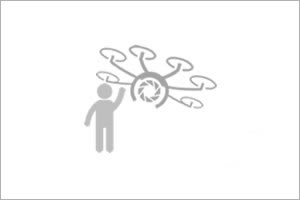1. Unmatched preparedness and willingness to support
Drones For Hire is an authorised DJI Agriculture Service Centre (DJI ASC). This is because of our ag drone knowledge accumulation, service centre capabilities (repairs, demonstrations, training) and support network of technicians. We have multiple staff certified as official DJI Academy Certified Agras Instructors & DJI Certified Agras Repair Technicians. These staff had to pass exams and do complete disassembly and reassembly videos to show their knowledge is real. Drones For Hire began selling the DJI MG-1P spray drone and has sold more DJI Ag. drones than any other dealer in Australia. We were doing demos for the T30 which had the older pressure (Teejet nozzles) back in 2022/3 (3-min video), T40 demo, and T50 demo . We support customers with a mature library of tech support videos such as this 5-min spreader calibration video tutorial. Here is a 2-min stockman video about the benefits of a regular sized drone (M3E) for scouting stock yards, monitoring feral pigs and even mustering.
2. A setup and training day included at no cost
Spray drone purchasers receive a full day with a Drones For Hire technician for equipment set up and training. Face to face on your property. Drones For Hire has 2-3 technicians in each state, who typically own and use DJI spray drones, and mapping drones and related gear. We can’t underestimate how important this is and how often customers thank us for it. Because it means the technician has relevant knowledge and context as to how to best apply the technology to the kind of country you have on your property and your spraying/spreading goals.
3. Mapping session included at no cost
A complimentary M3M/M4E (Mavic 3 Multispectral or Matrice 4 Enterprise) mapping flight to map the first 10 ha section of your property, as part of your setup day. Note this can be changed by request to e.g. demonstrate the Matrice 4 Thermal drone (for e.g. spotting feral pigs, counting cows, checking water levels in a cotton field).
4. Spray drone jobs subscription credit included at no cost
Credit for receiving spray drone job inquiries from our job inquiries marketplace (55,000 inquiries processed since 2013 – Australia’s largest and longest running drone job marketplace).
Very handy if you wish to use your spray drone as a commercial business or just to pick up the odd local job.
5. Official AU stock that has a warranty and is insurable
Drones For Hire is not interested in black market / grey market / illegal imports. These units are geo-locked by the OEM meaning they will only take off in a specific country / region of the world. Additionally, there is no local AU warranty, and the owners’ insurance policy will be void when they make a claim since the SN Serial Number will not pass the OEM reference check. Above all, these units are usually very poorly supported if at all, and arranged by short sighted, transient suppliers.
Drones For Hire stock is legitimate and correct for the AU region and backed with an official DJI warranty. We have a good and long standing relationship with the leaders of DJI Agriculture, and local DJI staff in Australia.
6. A commitment to innovation and local manufacturing
Drones For Hire manufactures our own aluminium enclosures for spray drones (2-min video)
Drones For Hire also makes our own Batch Master chemical mixing stations, Fast Mover T50 transport kits, Fast-fill caps, RTK Hard Cases and various other items.
Culturally, Our goal is to be the most farmer-centric ag. drone business in Australia and to grow fast by investing in our ‘support is sales’ mantra, and the mechanisms that enable it.
7. Ag drone spares ready to ship
Drones For Hire recognises the urgency when a farming machine is out of action – often it happens at the worst time and can lead to yield and other losses. Our customers are always juggling different priorities and changing weather systems , varying prices for their crops/ beef/ wool etc.
For this reason, Drones For Hire has pre-ordered and has in supply a large number of ag drone spares that we can ship very fast via our Toll Priority partnership. In all cases, we try our best to quickly understand the situation, identify the parts requirement, ship without delay and arrange help as required.
8. $1000.0 spares kit include at no cost
We also include a $1000.0 spares kit for free with all our T50 bundles. The kit contents are carefully considered by our technicians and are updated when needed to give you the best chance of continuing to spray when a consumable part needs replacing.
9. A solid presence in the Australian drone industry
Drones For Hire has been operating for more than 10 years, and operates the largest and longest running drone jobs marketplace, having processed more than 55,000 drone jobs. Drones For Hire also sells $M of drone hardware each year and has a large dry-hire drone rental fleet.
10. A full workshop dedicated to repairs, modifications
Drones For Hire has a workshop for all warranty and non-warranty repairs. It consists of the equipment necessary to support our clients and keep their gear running such as a large working area, 100 ha for flight testing and training, substantial tools, winches, generators, vehicles, trailers, mixing/batching tanks, granular bins and a mapping training area/media area.
Feel free to reach out and ask about the suitability of a T50 for your own property or for your contract spraying business: [email protected] or 1300 029 829.
Go to T50 bundles (shop page)











